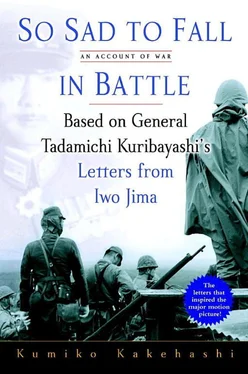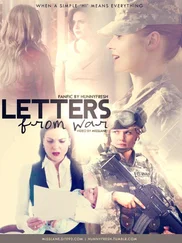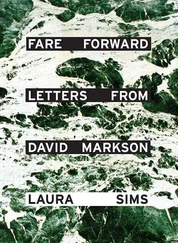The grimmer the reality, the more commanders have to face it directly. James Bradley regarded Kuribayashi as “one of the few Japanese commanders of the war who calmly faced reality and was consequently unable to take an optimistic point of view.”
Kuribayashi verified things with his own eyes, and never allowed preconceptions or wishful thinking to cloud his judgment. His strategy was effective in battle precisely because it originated from such a starting point.
Abandoning defense at the water’s edge was not the only reason why the Japanese forces on Iwo Jima managed to put up such a heroic fight. The fact of building all their defensive positions underground was also significant.
Iwo Jima was very flat. There was almost nowhere suitable for placing a military stronghold. Ordinary dugouts or foxholes were not likely to survive for long in the face of ferocious American air raids and naval barrages.
Kuribayashi therefore decided that the best solution was to construct all the defenses underground, linking them with tunnels so the defenders could move between them. His walks around the island had confirmed that there were many natural caves. It would be absurd not to make use of them.
Arms and ammunition, equipment, manpower—the Japanese were weaker than the enemy in all these areas. Their aim was to hold out for as long as possible, so it would be rash to go for a head-on confrontation. Kuribayashi felt that hiding in their underground positions and making sneak attacks when the enemy was least expecting them was the most effective option. With such tactics, the Japanese could keep on fighting even when down to their last man. It was guerrilla warfare.
Guerrilla warfare is a strategy for resistance. The goal is not victory, it’s not to lose. Guerrilla warfare is the only option available when the side that is inferior in fighting strength wants to wage a war of attrition against an overwhelmingly strong opponent. The communist forces led by Mao Tse-tung and the Vietnam War are both examples of this.
The garrison on Peleliu, a small island in the Palau Islands, mounted a heroic resistance based on the same approach as Iwo Jima—building underground defenses and continuing to resist the enemy with guerrilla attacks even as troop numbers dwindled—and it caused the Americans great grief.
Colonel Nakagawa Kunio headed the garrison at Peleliu. Under his command, more than ten thousand soldiers mounted a stubborn defense that endured for more than two months. His men supposedly created as many as five hundred underground defensive positions.
Peleliu, like Iwo Jima, had natural caves. Colonel Nakagawa chose the method of combat that would exploit these to maximum advantage.On Peleliu, again just like Iwo Jima, the key goal of the Japanese was to hold on to the airfield, even though they had almost no planes left.
The Americans launched their assault on Peleliu on September 15, 1944, with a view to securing a foothold for the invasion of the Philippines. The Japanese were finally defeated on November 25. Over this time, the Peleliu garrison received gokashô —words of praise from the emperor for their gallant and tenacious fighting—no less than ten times.
Peleliu was invaded before Iwo Jima, and the defense strategy implemented there had much in common with the strategy employed on Iwo Jima. Kuribayashi, however, did not develop his strategy based on lessons learned from the Battle of Peleliu. The garrison on Iwo Jima had been building underground defenses for some time in line with Kuribayashi’s strategy when news of the heroic resistance of the Peleliu garrison reached them. The reason these two brilliant generals devised and implemented the same strategy at almost the same time was because they both had the correct apprehension of reality, both refused to be awed by precedent, and both judged things rationally.
Coming up with the plan to transform an entire island into a fortress by building underground defenses was one thing; actually doing it was another. The physical labor the soldiers had to perform was almost unbearably grueling. On Iwo Jima, in particular, constructing the defenses was to prove extremely difficult.
The positions were built to a depth of fifteen to twenty meters in order to withstand bombs and shells. The Motoyama area, where the major defensive positions were placed, was made out of tuff, a soft rock formed by the consolidation of volcanic ash, meaning it was relatively easy to dig. The problem was the geothermal heat, which went as high as 140 degrees Fahrenheit, and the sulfur vapor that spurted out in places.
Ishii Shûji, a photographer for the Mainichi Shimbun newspaper, who was conscripted and served as an orderly in the 109th Division, 2nd Mixed Brigade field hospital, recalled the job of excavating the defenses in Iô-Tô ni Ikiru ( Living on Iwo Jima ), the book he wrote after the war.
We would take advantage of lulls in the air raids and naval gun barrages to dig in places where the ground looked hard. We were just bashing away with picks, so even if we spent the whole day on the job, we’d only manage a meter at most. If we used a stick of dynamite, we’d still take ages to do two meters.
In places where the geothermal heat was high, the soles of the soldiers’ jikatabi (split-toed rubber-soled shoes) would melt, and the sulfur gas gave them headaches and made breathing difficult. Dressed only in loincloths, they would work in five- or ten-minute shifts.
The reason we did ten-minute shifts was because the geothermal heat in the cave was high and we were working in darkness—so even that ten minutes was extremely unpleasant. Our hands were covered in blisters, our shoulders got stiff, and as we gasped and panted in the geothermal heat our throats would smart, but there was no drinking water to be had.
At the time, the daily ration of drinking water was fixed at one canteen per person. Some survivors’ accounts say that it was “one canteen for two,” or “one canteen for four,” but even that precious water was frequently polluted, and many of the soldiers suffered from paratyphoid or diarrhea. In Ogasawara Heidan no Saigo ( Last Days of the Ogasawara Army Corps ), one of the survivors recalled: “We gave the water nicknames like ‘devil water’ and ‘death water.’ It came from a well we had dug near the coast, so it was salty—and worse than that, it was hot.”
They had to depend on occasional cloudbursts, when they would catch the rain on tent sheets and pour it into drums and water tanks, where they would store it. Whenever it rained, all the soldiers, including Kuribayashi himself, would grab whatever vessel was close at hand—cups, cooking pots, and buckets—and rush outside. Rear Admiral Ichimaru Rinosuke, the highest-ranking navy officer on Iwo Jima, would chant the lines: “Rain is the water of life. Outsiders cannot know how we feel as we wait for a cloud on this island.”
Ishii Shûji, who survived and returned to his job at the newspaper, went back to Iwo Jima seven years after the war. He wrote about his experience revisiting the Command Center (“Kuribayashi Cave”).
I shone my flashlight around the walls and the roof, and then onto the floor, at which point the light bounced back at me. I did a double take peering to see what was down there. It was a puddle of water. Since I knew there was no underground water, the only possibility I could think of was that the water had seeped in from the outside. Over the course of seven long years, the rainwater must have made a puddle in the depressions of the floor of the dark cave.
If only the water had been here when we were digging the bunker, I thought. Unconsciously in the darkness I walked around the puddle so as not to sully it with my muddy shoes.
Читать дальше












